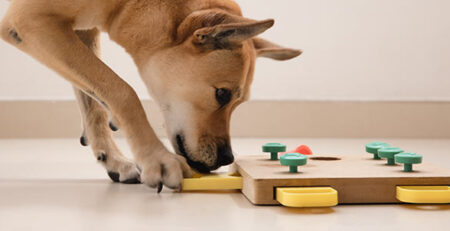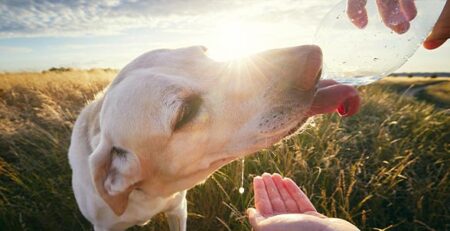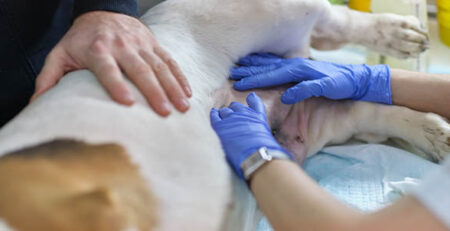Table of Contents
A cat and dog vacation is a fun and exciting experience, but you have to organize it in every detail if you want it to be truly “four-legged tourist-friendly.”
When you start planning a cat and dog vacation, you need to pay proper attention before departure, during your stay, and even when you return from your trip.
Just as it happens to humans, dogs and cats may also be affected by “reentry depression.”
Getting ready for the dog and cat vacation
First stop on the trip: a visit to the veterinarian.
A
check-up
general of the animal is essential to rule out ongoing illnesses and to make sure that your 4-legged companion is in the proper health condition to face a trip.
So, the first thing to do if you decide to take your pet on vacation with you is to arrange a checkup with your trusted veterinarian.
If your pet is anxious or tends to become stressed, your veterinarian will also be able to point you to the remedy to alleviate any symptoms of potential discomfort.
Also, ask your veterinarian how to create a small basic first aid kit to have on hand at all times in case of need, or buy a ready-made one: there are plenty on the market.
What should never be missing in a four-legged dog’s suitcase
First, here are the documents to pack:
-Health booklet properly completed and updated by the veterinarian
-Passport if the destination of arrival is outside the territory of Italy
-Documents or health certificates required by the country you will be visiting
And again, everything you need to go on vacation with your dog and cat and manage them as if they were at home:
-Food
-Biots
-Customary drugs
-Favorite games
-Family clothing
-Leash and muzzle
-Toilet bags or litter box
Precautions and precautions when traveling with your dog and cat
Whatever means of transportation you decide to travel with, it is a good idea to use the appropriate precautions and precautions to make the journey for your pet pleasant, comfortable and low-stress.
ROAD TRIP
Before embarking on a long car trip, gradually accustom the animal to travel.
Start with short routes and then gradually increase the time and duration of the route.
Bring along a toy or blanket that the animal usually uses-it can help make the environment familiar to him.
Heat, air conditioning and abrupt temperature changes are dangerous for our animals.
Avoid departures during the sunniest hours of the day to ward off the danger of heat stroke.
While traveling, keep at least one window partially open to promote air exchange and ventilation inside the passenger compartment.
Bowl, water and moistened, refreshing wipes should never be lacking.
Drive carefully, avoiding acceleration and braking.
Motion sickness (i.e., motion sickness) can also affect animals.
Schedule regular stops to allow the dog to get out of the car, stretch and go potty.
Recall that pursuant to Art. 169 of the New Highway Code – Transportation of Persons, Animals and Objects on Motor Vehicles: “Only pets may be transported provided they are kept in a special cage or container or in the rear compartment at the driver’s seat specially divided by netting “
TRAVEL BY SHIP, FERRY, TRAIN OR PLANE
Regarding travel by train, ship or plane, the rules for transporting pets may vary from one company to another.
Inform yourself in advance about the Regulations of the Travel Company.
Your pet may be allowed in the cabin or in the cargo hold: either way, it will likely have to travel inside a carrier.
If your pet has never been accustomed to using a carrier, a long trip as a first experience could be perceived as a highly traumatic event.
Therefore, we recommend that you familiarize him with the “container” for some time by, for example, leaving it open in the house and placing toys, cookies, clothing or covers inside that are impregnated with your and his smell.
The carrier should be well ventilated, large enough for the animal to stand upright and crouch, waterproof, with the bottom lined with absorbent material for droppings, and equipped with safety latches.
While traveling, the carrier should NEVER be opened except to allow the animal to scamper but under proven safe conditions taking care that there are no accessible escape routes.
Do you know how many animals, dazed by unfamiliar places and environments, tend to run away as soon as you open the carrier?
Caution is never too much: don’t put your pet at risk because of carelessness.
Vacationing with your dog and cat across national borders: the European passport
If your travel destination is outside Italy, be aware that a European Passport must be obtained for travel within EU countries for dogs, cats and ferrets.
In fact, Regulation (EU) 576/2013 of the European Parliament and of the Council of June 12, 2013 stipulates the need for animal identification when animals are moved.
The European Passport, in Italy, is issued by the veterinary services of the Local Health Authority at the request of the owner and contains the following information:
-Details of the animal, including microchip identification number
-Medical examinations
-Eventual treatments againstechinococcus multilocularis (only for certain destinations)
-List of all vaccinations given, including rabies vaccination
Rabies vaccination must be carried out at least 21 days before the animal is brought into the country of destination.
We recommend, therefore, that you apply for a passport at least 1 month in advance of your planned departure date.
Re-entry depression in dogs and cats: post-holiday stress
Once the vacation is over, the “re-entry syndrome” may affect your pet as well.
Vacation means lots of time on your hands, relaxation, games, unplugged phone, lots of walks.
Your 4-legged companion gets used to spending every hour of his, her, or your days with you. Situation for him of extreme fulfillment and happiness, and then … and then you go back home.
Dogs and cats may be poorly digesting the newfound rhythms of daily routine. Kind of like us, humans, who struggle not a little to get back into the rhythm of office hours.
The depressed animal may exhibit inappetence, apathy and exhaustion. What to do, then?
One solution is to continue to involve him in the same activities that intrigued or excited him during the vacation.
Carve out time for activities to do with your 4-legged friend: a drive, a jog, a long walk.
Slowly, with patience and dedication, his mood will return to normal. And yours as well.
For vaccine prophylaxis, checkups and documents to attach to your four-legged dog’s Passport, book a visit with our Staff veterinary doctors who are always available to you.
We would also like to remind you that in case of need and urgency, Clinica La Veterinaria is always open h24, every day including holidays and with First Aid service from 8 pm to 8 am.
For the joy of seeing them HAPPY.











